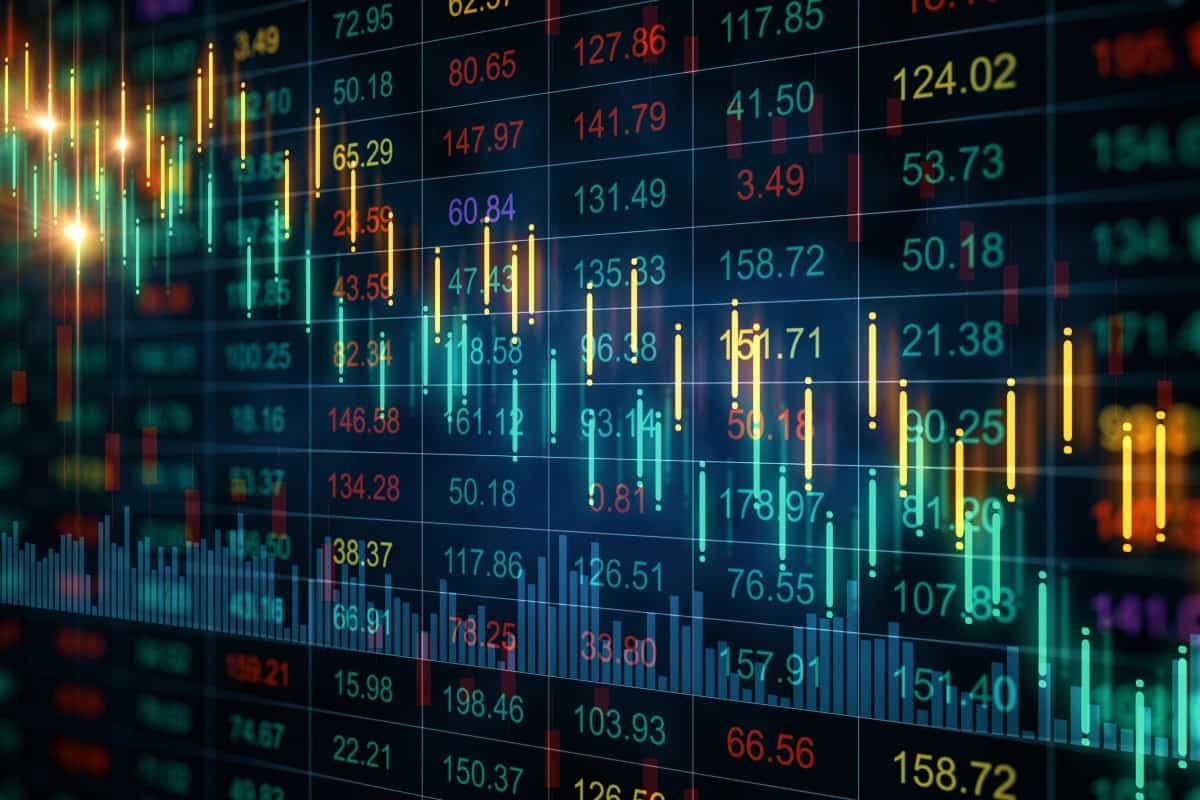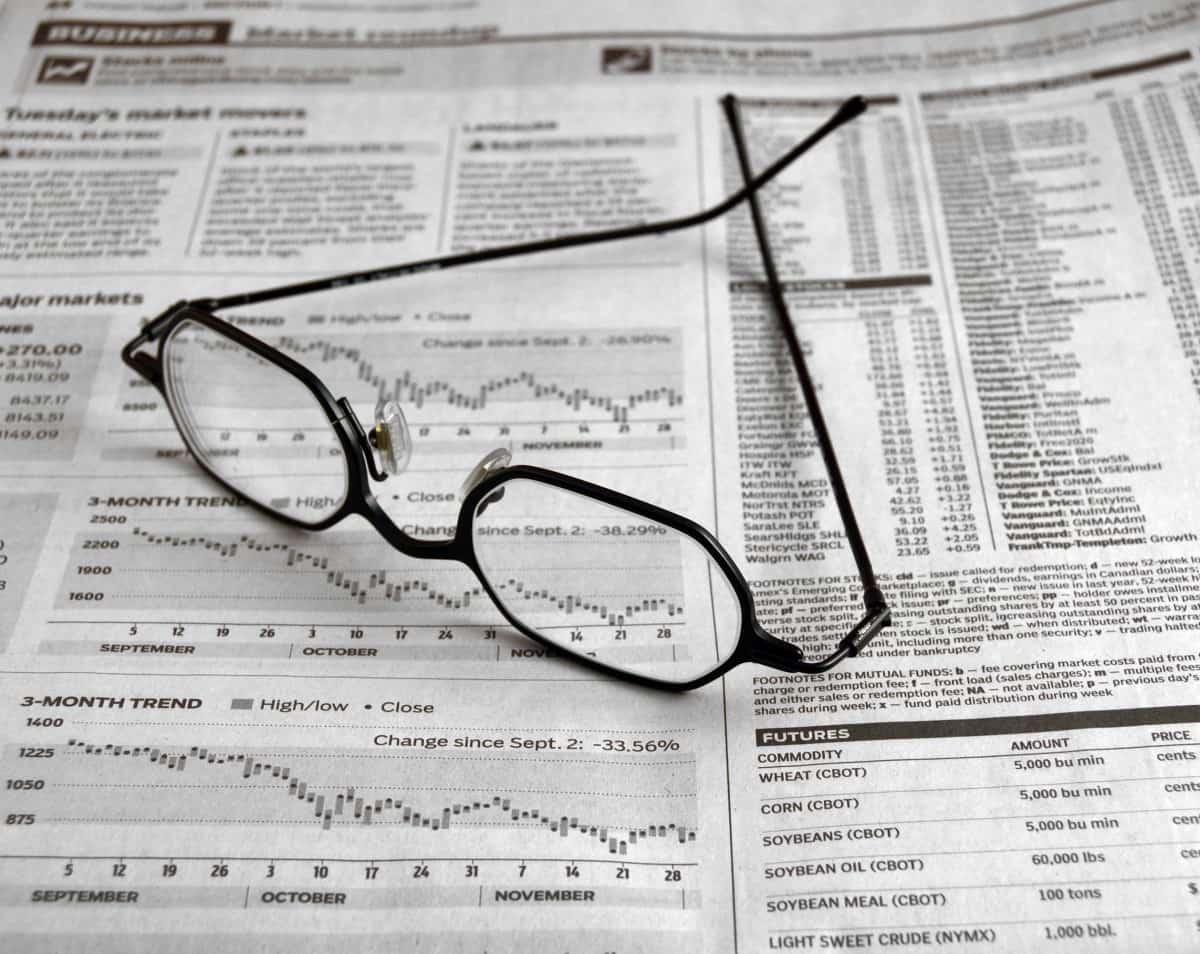

What are the Nasdaq exchange and Nasdaq 100 index?
The exchange and the Nasdaq indices are heavily weighted to technology and growth companies, making them of interest to investors and traders alike.
What Is the Nasdaq Exchange?
Nasdaq is an American stock exchange headquartered in New York. It was the first electronic exchange globally that led the move to automated trading.
The exchange is owned by Nasdaq Inc, a publicly listed company. Nasdaq Inc also owns and operates eight European exchanges. While originally licensed as a stock market, Nasdaq is now a licensed national securities exchange.
Over 3,000 companies are now listed on the Nasdaq exchange. They are divided into small-, mid- and large-cap stocks.
Nasdaq stands for the National Association of Securities Dealers Automated Quotations.

The Nasdaq Indices
The two widely followed Nasdaq indexes are the Nasdaq Composite and the Nasdaq 100.
The Nasdaq Composite is an index of all common stocks, ADRs and other ordinary shares listed on the Nasdaq exchange.
The Nasdaq 100 is a subset of the Nasdaq Composite and is made up of the 100 largest non-financial companies in the Nasdaq Composite index.
The Nasdaq 100 accounts for around 90% of the value of the Nasdaq Composite Index.
ETFs, futures and options on both indices are widely traded. Products tracking the Nasdaq 100 are amongst the most widely traded in the world.
The History of the Nasdaq
The Nasdaq exchange was started in 1971 by the NASD (National Association on Futures Dealers), now known as FINRA. Initially, it was set up as an electronic system. When the electronic quotation system became operational, it was relatively easy to add a trading system. Thus, the world's first electronic exchange was born.
By 1981, 37% of stock trades in the US were conducted on the Nasdaq exchange, and, by 1991, the percentage had grown to 46%. The exchange really took off in the late 1990s during the Dot Com bubble. It was the first exchange to facilitate online trading and became the preferred exchange for technology companies to list on.
Nasdaq Inc became a listed company in 2002 after FINRA sold its stake in it. The company now has a market value of $16 billion and annual revenues of $4.2 billion.

How Are the Nasdaq Indices Calculated?
Both Nasdaq indexes are market cap-weighted. That means the weight of each stock in the index reflects its value compared to that of all the companies in the index.
Market-cap-weighted indices are calculated by adding up the value of all the companies and then summing the percentage attributable to each company. The index is based on 100 when it's launched and then grows in line with the companies it includes.
Nasdaq indices are rebalanced annually in December. Any companies no longer eligible are removed from the indices and replaced by newly eligible companies. Weighting may also be adjusted according to new share issues or repurchases.

What Is the Nasdaq 100?
The Nasdaq Composite Index, which includes all Nasdaq listed companies, was launched in 1971 when the exchange went live. In 1985, the Nasdaq 100 index was launched to reflect the values of the most liquid, non-financial companies.
The Nasdaq 100 is one of the three major US indices, the other two being the Dow Jones Industrial Average and the S&P5 00. The Dow contains just 30 stocks and is price-weighted. The S&P 500 is also a market-cap-weighted index but includes 500 stocks. These indices also include financial companies like banks and insurers.
The index began with a value of 100 in 1971 and first reached 1,000 in 1995. At the peak of the Dot Com bubble in March 2000, it reached 5,046. It then fell to 3,938, or by 78%, over the following 18 months. After bottoming at 1,108, it took another 13 years to reach its previous high again. In July 2019, it reached a new record high of 8,321.

The following 5 companies account for 45% of the Nasdaq 100 and therefore have the most influence on the index's direction:
- Microsoft (MSFT) makes up around 11% of the index and has a market value of about $1 trillion. Besides the company's well-known software, it's building a rapidly growing cloud business.
- Apple (APPL), which accounts for around 11% of the index, is worth just over $1 trillion. Apple sells computers, tablets and smartphones, video subscription services, music, apps and other services.
- Amazon (AMZN), with a market value of $850 billion, makes up 9.5% of the index. Amazon's profits come from its marketplace, cloud business (AWS) and advertising.
- Alphabet/Google (GOOG) accounts for 8.5% of the index and is worth $820 billion. Google owns numerous businesses, including YouTube, Gmail, Android and the Google search engine. Most of Google's revenue comes from advertising.
- Facebook (FB), with a value of $500 billion, is 4.7% of the index. Besides the Facebook platform, the company owns WhatsApp and Instagram. It makes its money from advertising on various platforms.

The largest 20 companies account for just under 70% of the index. Other prominent members of the index include Intel, Cisco, Pepsi, Comcast, Adobe, Starbucks and Netflix.
The Nasdaq 100 includes the largest non-financial companies listed on the Nasdaq. The Nasdaq Financial 100 includes financial companies like Etrade, T Rowe Price and Zillow. The Nasdaq100is widely considered a technology-focused index, which it is, though not by design. There are several companies from other sectors, including Pepsi, Costco, Starbucks and Walgreens.
Trading the Nasdaq 100
An index is merely a price calculation, so you can't trade an index. However, you can trade ETFs, futures contracts and CFDs based on it.
The largest ETF (exchange-traded fund) tracking the Nasdaq 100 is Invesco PowerShares' QQQ fund. It has $73 billion under management and is listed on the Nasdaq exchange, too.
While ETFs are adequate for investors who don't require leverage, traders and most investors look to CFDs and futures contracts to trade the Nasdaq 100 because they're more liquid and offer other advantages
What is CFD Trading?
Contracts for Difference, or CFDs, are derivative trading instruments. They're similar to futures contracts but aren't traded on centralised exchanges like futures. Instead, each CFD is a contract between a broker and a client.
There are several advantages to trading CFDs. They can be traded on any tradable underlying assets, including stocks, index futures, currencies, commodities and cryptocurrencies.
They allow traders to trade all these underlying assets from markets worldwide, on one trading platform, such as Libertex, and with one trading account. This is a major advantage of CFD trading as it reduces the number of accounts you need to keep track of.
CFDs are traded using margin, which means only a percentage of the value of the trade needs to be deposited to open a position. CFDs can easily be shorted, too.
Nasdaq CFD Trading
CFDs offer several advantages for traders and investors alike. Libertex offers CFDs on the Nasdaq 100 futures and live charts and prices. The market can be tracked on the Libertex platform and the very popular MetaTrader 4 platform.
Libertex Nasdaq 100 CFDs offer leverage of 100x and a minimum trade value of just €20.
Advantages and Disadvantages of Nasdaq 100 CFDs
As with all trading activities and underlying assets, there are advantages and drawbacks to consider when trading Nasdaq 100 CFDs.
Pros:
- The Nasdaq 100 is more volatile than other indexes, creating more trading opportunities.
- Several of the fastest-growing companies worldwide make up a large percentage of the index. They include Apple, Amazon, Google and Microsoft. This means the index gains more value than other indices during bull markets.
- CFDs on the Nasdaq allow traders to increase their positions by using leverage, which may result in bigger profits or bigger losses.
- CFDs also allow traders to open short positions and open positions during corrections and bear markets.
- CFD trading accommodates smaller trades than futures trading, with a very high minimum trade size.

Cons
- Because of its volatility, the Nasdaq can move a lot overnight and during a single trading session. While this can help you increase your profits, it applies to losses, too, as volatility carries higher risk.
- The Nasdaq can be unpredictable during periods of market volatility.
Nasdaq Trading Hours
The Nasdaq exchange's official trading hours are 9:30 am until 4 pm EST. However, there's also a pre-market session from 4 am until 9:30 am and a post-market session from 4 pm until 8 pm.
Conclusion
The Nasdaq exchange is home to many of the most successful companies in the world. The Nasdaq 100 offers exposure to the largest 100 of these companies. The index is a good benchmark for long-term growth investors. Trading instruments like CFDs based on the index offer traders numerous opportunities to trade this index as it rises and falls.
You can trade CFDs on the index with Libertex. If you want to get started, you can open a risk-free demo account at any time. This will allow you to get used to the trading platform and learn more about trading the Nasdaq 100 with no risk or cost.
Libertexis a CFD broker which offers tradable underlying assets such as offers CFDs on stocks, indices, ETFs, cryptocurrencies, etc .
Disclaimer: The information in this article is not intended to be and does not constitute investment advice or any other form of advice or recommendation of any sort offered or endorsed by Libertex. Past performance does not guarantee future results.
Why trade with Libertex?
- Get access to a free demo account free of charge.
- Enjoy technical support from an operator 5 days a week, from 9 a.m. to 9 p.m. (Central European Standard Time).
- Use a multiplier of up to 1:30 (for retail clients).
- Operate on a platform for any device: Libertex and MetaTrader.